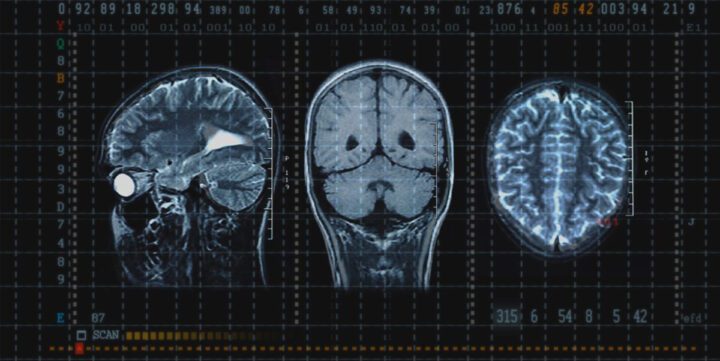Managing Concussion in Community Sport Part 1
May 30, 2023
Concussion; the biggest issue facing Australian sport
In the last 12 months we have seen an increased awareness of concussions in our lives, sparking an important discussion into the long-term health implications. Concussion in sport is a serious and prevalent concern, with more policy needed to regulate the delivery of treatment and rehabilitation following concussion. In Australia, recent events have brought the issue into sharp focus, sparking discussions around the need for a ‘concussion passport’ – a record of an athlete’s history of head injuries that could follow them throughout their sporting career.
The push for such a system was accelerated by the tragic death of South Australian footballer Antonio Loiacono. At the young age of 20, Loiacono died following an on-field collision during a Hills Football League match. This follows an unfortunately lengthy history of concussion throughout his career. His passing has highlighted the potential dangers of recurrent concussions, particularly in contact sports, and underscored the need for improved tracking of athletes’ concussion histories. It also sparks concerns for other players in rehabilitation or following treatment protocols for concussions, wondering; are we doing enough to prevent these unfortunate outcomes from happening again?
Australian Medical Association SA President, Dr. Michelle Atchison, voiced the medical community’s concern over the risks of recurrent concussions, stating that repeated brain trauma could lead to permanent brain damage. She highlighted that it wasn’t just limited to Australian rules football but any contact sport, where players often move between different codes and levels, risking loss of medical continuity. Dr. Atchison noted that despite potential privacy concerns, providing clubs with access to an athlete’s medical records, particularly concerning head injuries, could be a beneficial move. This would enable a club’s doctors to make informed decisions about a player’s return to play after a concussion, taking into consideration their cumulative history of head injuries.
What do we know about the long-term health implications?
Although more research is needed to understand the implications of concussion beyond just the athletic life of an individual; Chronic Traumatic Encephalopathy (CTE) is a serious and known long-term effect of such trauma. CTE is a neurodegenerative disease believed to result from repetitive brain trauma, including concussions and subconcussive blows to the head. The condition is most commonly identified in individuals who have a history of contact sports or military service, but it can also occur in others with a history of repetitive brain trauma.
CTE is characterised by the build-up of an abnormal protein called tau in the brain. This protein can damage cells and lead to symptoms such as memory loss, confusion, impaired judgement, impulse control problems, aggression, depression, anxiety, suicidality, Parkinsonism, and, eventually, progressive dementia.
CTE pathophysiology and what research tells us
The pathology of CTE is unique, characterised by a pathognomonic lesion consisting of a perivascular accumulation of neuronal phosphorylated tau (p-tau) variably alongside astrocytic aggregates at the depths of the cortical sulci, and a distinctive molecular structural configuration of p-tau fibrils that is unlike the changes observed with aging, Alzheimer’s disease, or any other tauopathy. Computational 3-D and finite element models predict the perivascular and sulcal location of p-tau pathology as these brain regions undergo the greatest mechanical deformation during head impact injury.
Presently, CTE can be definitively diagnosed only by postmortem neuropathological examination; the corresponding clinical condition is known as traumatic encephalopathy syndrome (TES). Over 97% of CTE cases published have been reported in individuals with known exposure to repetitive head impacts (RHI), including concussions and non concussive impacts, most often experienced through participation in contact sports. While some suggest there is uncertainty whether a causal relationship exists between RHI and CTE, the preponderance of the evidence suggests a high likelihood of a causal relationship, a conclusion that is strengthened by the absence of any evidence for plausible alternative hypotheses.
History of CTE
The understanding and diagnostic criteria of Chronic Traumatic Encephalopathy (CTE) has been a result of incremental knowledge gained over several decades. As early as the 1950s and 1960s, case reports were starting to paint a picture of the neuropathology of CTE, with a seminal study by Corsellis et al. in 1973 elucidating the neuropathological characteristics using 15 former male boxers as subjects. The research by Corsellis et al. detailed both macroscopic and microscopic changes in the brain. They reported macroscopic alterations such as cerebral atrophy, expansion of the lateral and third ventricles, a reduced thickness of the corpus callosum, fenestrations in the cavum septum pellucidum, and scarring in the cerebellar tonsils. At the microscopic level, they employed histological techniques of the time, including cresyl violet, von Braunmühl’s silver stain, and Kings amyloid stain, to identify sparse argyrophilic neurofibrillary tangles (NFTs) in the cerebral cortex and substantia nigra. They also observed senile plaques in one-fifth of the cases. A later reassessment of Corsellis’ initial group of boxers using beta-amyloid (Aβ) immunohistochemistry revealed diffuse Aβ deposits in 95% of the cases.
The 1990s saw more advancements, with Hof et al. and Geddes et al. employing novel staining techniques to describe the neuropathology of individuals with repetitive head injuries, such as perivascular clusters of neurofibrillary tangles (NFTs) – a key feature of CTE. Amongst this breakthrough, a forensic neuropathologist in Pittsburgh, USA was discovering the first criteria for diagnosis of CTE. Following growing concern in the American National Football League, Dr. Omalu conducted postmortem studies on the brain of Mike Webster, a former NFL offensive lineman. It was during these examinations that he identified what would later be recognized as the defining characteristics of CTE.
The pioneering work of Omalu and colleagues presented the initial neuropathological findings in an American National Football League (NFL) player who passed away at the age of 50 following cognitive impairment, mood alterations, and parkinsonian symptoms. The researchers identified mild and nonspecific tau pathology, characterised by infrequent neurofibrillary tangles (NFTs) in the neocortex and locus coeruleus (LC), as well as widespread Aβ plaques. In a second NFL case, NFTs, varying from sparse to frequent, were detected in the frontal and temporal cortices, diencephalon, and brainstem. They did not report a perivascular or superficial distribution of tau pathology or a preference for sulcal depths, both considered indicative of CTE by Hof and Geddes. However, case photomicrographs did reveal perivascular p-tau clusters, now recognized as a distinctive sign of CTE. Omalu and his team also reported p-tau pathology in a professional wrestler, aged 40, who committed suicide, with sparse to frequent NFTs and neuropil threads found in the cortex, subcortical ganglia, and brainstem nuclei, interpreted as signs of CTE.
In 2013, McKee et al. presented the “McKee criteria” for CTE diagnosis, emphasising the irregular distribution of NFTs, its perivascular pattern, and preferential involvement of cortical laminae II and III. They also proposed a staging scheme based on severity and progression of p-tau pathology. The same year, Hazrati et al. highlighted findings from former Canadian Football League players, with three cases confirming CTE neuropathological diagnostics.
These historical events underscore the evolving understanding and criteria for diagnosing CTE based on neuropathological findings.
Future of concussion in sport
The chief executive of the SA Sports Medicine Association, Danielle Grant-Cross, also supports the idea of a concussion register. She emphasised the importance of information sharing between sports and clubs to ensure player safety. She also advocated for clubs to encourage athletes to disclose injuries and suggested conducting screenings and education sessions at the start of each season.
These developments have incited responses from athletes as well. Adelaide Crows midfielder Rory Sloane urged fellow footballers to take concussions seriously, citing the case of Adelaide player Paul Seedsman, who was placed on the inactive list for two seasons following a head knock in 2021. Sloane stressed the importance of rest and medical care in concussion recovery, urging all players to prioritise their health.
The issue of concussion in sports is undoubtedly a multifaceted one that involves medical, ethical, and logistical considerations. From a medical perspective, the potential for recurrent concussions to cause long-term damage is clear. Ethically, there is a strong argument for better tracking and management of athletes’ concussion histories to prevent further tragedies. The conversation around concussion in sports in Australia is evolving, with a growing recognition of the long-term health implications and the need for preventative measures like the concussion passport. This strategy, if implemented effectively, could significantly improve the safety and well-being of athletes, highlighting the importance of taking concussions seriously, not just in professional leagues but at all levels of play.
However, privacy considerations and the practical implementation of such a system remain challenges to be addressed. As Australian sport looks to move forward, the balance between ensuring player safety and respecting their privacy will likely continue to shape the discourse on concussion management.
Med CPD looks forward to covering this story further in the coming months as new research and frameworks are built to strengthen our understanding of the long-term implications of concussion in sport and guide a way forward, reducing the risk of irreversible harm.
McKee, A.C., Stein, T.D., Huber, B.R. et al. Chronic traumatic encephalopathy (CTE): criteria for neuropathological diagnosis and relationship to repetitive head impacts. Acta Neuropathol 145, 371–394 (2023). https://doi.org/10.1007/s00401-023-02540-w
Corsellis JA, Bruton CJ, Freeman-Browne D. The aftermath of boxing. Psychol Med. 1973;3(3):270-303. doi:10.1017/S0033291700049588
Omalu BI, DeKosky ST, Minster RL, Kamboh MI, Hamilton RL, Wecht CH. Chronic traumatic encephalopathy in a National Football League player. Neurosurgery. 2005;57(1):128-34; discussion 128-34. doi:10.1227/01.neu.0000163407.92769
Hazrati LN, Tartaglia MC, Diamandis P, et al. Absence of chronic traumatic encephalopathy in retired football players with multiple concussions and neurological symptomatology. Front Hum Neurosci. 2013;7:222. doi:10.3389/fnhum.2013.00222












